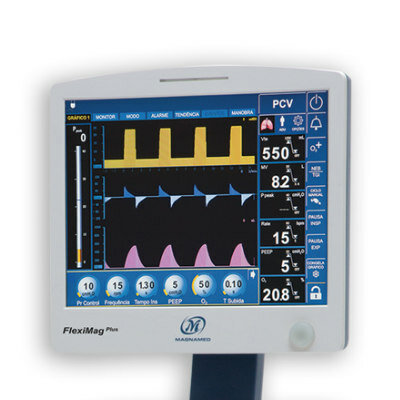“Big Data” Uncovers Real Prices Hospitals Charge Insurers
|
By HospiMedica International staff writers Posted on 13 Jan 2016 |
A new study reveals that the prices hospitals negotiate with private health insurance companies vary considerably within and across geographic regions in the United States.
Researchers at Carnegie Mellon University (CMU; Pittsburgh, PA, USA), Yale University (New Haven, CT, USA), the University of Pennsylvania (Philadelphia, USA), and the London School of Economics (LSE; United Kingdom) analyzed 92 billion health insurance claims from 88 million people covered by three of the largest insurance companies in the United States—Aetna, Humana, and UnitedHealth (Minnetonka, MN, USA).
The data, which represents spending and utilization for 27.6% of all individuals with employer-sponsored coverage, shows that the disparity of hospital prices within regions is the primary driver of variation in health care spending for the privately insured. For example, hospital prices for lower-limb magnetic resonance imaging (MRI) are 12 times higher in the most expensive area (Bronx, NY) than in the cheapest area (Baltimore, MD), and can vary by up to a factor of nine within the same geographic area (Miami, FL). Overall, spending was three times greater in the most expensive health market than in the cheapest.
The researchers also found an extremely low correlation (just 14%) between spending on Medicare (Baltimore, MD, USA) beneficiaries and spending on the privately insured. For example, in 2011, Grand Junction (CO, USA), had the third-lowest Medicare spending per beneficiary among the 306 hospital-referral regions (HRRs) in the United States, but the 9th highest inpatient prices and the 43rd highest spending per privately insured beneficiary.
While there are many factors influencing hospital prices, the study shows that hospitals that face fewer competitors have substantially higher prices, beyond those that would be driven by cost or quality differences. Hospitals in monopoly markets have prices that are more than 15.3% higher than those in HHR areas with four or more competitors. Hospitals that face only one competitor have prices that are over 6% higher, and those that face two competitors have prices almost 5% higher.
“Virtually everything we know about health spending and most of the basis for federal health policy comes from the analysis of Medicare data,” said lead author Zack Cooper, PhD, an assistant professor of health policy and economics at Yale. “The rub is that Medicare only covers 16% of the population. The majority of individuals, 60% of the US population, receive health care coverage from private insurers.”
“The fact that prices are so high and can vary so much for hospital treatments of the same costs and quality is simply mind boggling to foreign observers of the US health care system,” added senior author professor John Van Reenen, PhD, director of the Center for Economic Performance at the London School of Economics. “This is surely one of the reasons why US health care absorbs a bigger share of the GDP than every other large advanced country.”
Related Links:
Carnegie Mellon University
Yale University
University of Pennsylvania
Researchers at Carnegie Mellon University (CMU; Pittsburgh, PA, USA), Yale University (New Haven, CT, USA), the University of Pennsylvania (Philadelphia, USA), and the London School of Economics (LSE; United Kingdom) analyzed 92 billion health insurance claims from 88 million people covered by three of the largest insurance companies in the United States—Aetna, Humana, and UnitedHealth (Minnetonka, MN, USA).
The data, which represents spending and utilization for 27.6% of all individuals with employer-sponsored coverage, shows that the disparity of hospital prices within regions is the primary driver of variation in health care spending for the privately insured. For example, hospital prices for lower-limb magnetic resonance imaging (MRI) are 12 times higher in the most expensive area (Bronx, NY) than in the cheapest area (Baltimore, MD), and can vary by up to a factor of nine within the same geographic area (Miami, FL). Overall, spending was three times greater in the most expensive health market than in the cheapest.
The researchers also found an extremely low correlation (just 14%) between spending on Medicare (Baltimore, MD, USA) beneficiaries and spending on the privately insured. For example, in 2011, Grand Junction (CO, USA), had the third-lowest Medicare spending per beneficiary among the 306 hospital-referral regions (HRRs) in the United States, but the 9th highest inpatient prices and the 43rd highest spending per privately insured beneficiary.
While there are many factors influencing hospital prices, the study shows that hospitals that face fewer competitors have substantially higher prices, beyond those that would be driven by cost or quality differences. Hospitals in monopoly markets have prices that are more than 15.3% higher than those in HHR areas with four or more competitors. Hospitals that face only one competitor have prices that are over 6% higher, and those that face two competitors have prices almost 5% higher.
“Virtually everything we know about health spending and most of the basis for federal health policy comes from the analysis of Medicare data,” said lead author Zack Cooper, PhD, an assistant professor of health policy and economics at Yale. “The rub is that Medicare only covers 16% of the population. The majority of individuals, 60% of the US population, receive health care coverage from private insurers.”
“The fact that prices are so high and can vary so much for hospital treatments of the same costs and quality is simply mind boggling to foreign observers of the US health care system,” added senior author professor John Van Reenen, PhD, director of the Center for Economic Performance at the London School of Economics. “This is surely one of the reasons why US health care absorbs a bigger share of the GDP than every other large advanced country.”
Related Links:
Carnegie Mellon University
Yale University
University of Pennsylvania
Latest Health IT News
- Machine Learning Model Improves Mortality Risk Prediction for Cardiac Surgery Patients
- Strategic Collaboration to Develop and Integrate Generative AI into Healthcare
- AI-Enabled Operating Rooms Solution Helps Hospitals Maximize Utilization and Unlock Capacity
- AI Predicts Pancreatic Cancer Three Years before Diagnosis from Patients’ Medical Records
- First Fully Autonomous Generative AI Personalized Medical Authorizations System Reduces Care Delay
- Electronic Health Records May Be Key to Improving Patient Care, Study Finds
- AI Trained for Specific Vocal Biomarkers Could Accurately Predict Coronary Artery Disease
- First-Ever AI Test for Early Diagnosis of Alzheimer’s to Be Expanded to Diagnosis of Parkinson’s Disease
- New Self-Learning AI-Based Algorithm Reads Electrocardiograms to Spot Unseen Signs of Heart Failure
- Autonomous Robot Performs COVID-19 Nasal Swab Tests

- Statistical Tool Predicts COVID-19 Peaks Worldwide
- Wireless-Controlled Soft Neural Implant Stimulates Brain Cells
- Tiny Polymer Stent Could Treat Pediatric Urethral Strictures
- Human Torso Simulator Helps Design Brace Innovations
- 3D Bioprinting Rebuilds the Human Heart
- Nanodrone Detects Toxic Gases in Hazardous Environments
Channels
Artificial Intelligence
view channel
AI-Powered Algorithm to Revolutionize Detection of Atrial Fibrillation
Atrial fibrillation (AFib), a condition characterized by an irregular and often rapid heart rate, is linked to increased risks of stroke and heart failure. This is because the irregular heartbeat in AFib... Read more
AI Diagnostic Tool Accurately Detects Valvular Disorders Often Missed by Doctors
Doctors generally use stethoscopes to listen for the characteristic lub-dub sounds made by heart valves opening and closing. They also listen for less prominent sounds that indicate problems with these valves.... Read moreCritical Care
view channel
Deep-Learning Model Predicts Arrhythmia 30 Minutes before Onset
Atrial fibrillation, the most common type of cardiac arrhythmia worldwide, affected approximately 59 million people in 2019. Characterized by an irregular and often rapid heart rate, atrial fibrillation... Read more
Breakthrough Technology Combines Detection and Treatment of Nerve-Related Disorders in Single Procedure
The peripheral nervous system (PNS) serves as the communication network that links the brain and spinal cord to every other part of the body. It consists of two parts: the somatic nervous system, which... Read moreSurgical Techniques
view channel
Hydrogel-Based Miniaturized Electric Generators to Power Biomedical Devices
The development of engineered devices that can harvest and convert the mechanical motion of the human body into electricity is essential for powering bioelectronic devices. This mechanoelectrical energy... Read moreWearable Technology Monitors and Analyzes Surgeons' Posture during Long Surgical Procedures
The physical strain associated with the static postures maintained by neurosurgeons during long operations can lead to fatigue and musculoskeletal problems. An objective assessment of surgical ergonomics... Read more.jpg)
Custom 3D-Printed Orthopedic Implants Transform Joint Replacement Surgery
The evolving field of 3D printing is revolutionizing orthopedics, especially for individuals requiring joint replacement surgeries where traditional implants fail to provide a solution. Although most people... Read more
Cutting-Edge Imaging Platform Detects Residual Breast Cancer Missed During Lumpectomy Surgery
Breast cancer is becoming increasingly common, with statistics indicating that 1 in 8 women will develop the disease in their lifetime. Lumpectomy remains the predominant surgical intervention for treating... Read morePatient Care
view channel
Surgical Capacity Optimization Solution Helps Hospitals Boost OR Utilization
An innovative solution has the capability to transform surgical capacity utilization by targeting the root cause of surgical block time inefficiencies. Fujitsu Limited’s (Tokyo, Japan) Surgical Capacity... Read more
Game-Changing Innovation in Surgical Instrument Sterilization Significantly Improves OR Throughput
A groundbreaking innovation enables hospitals to significantly improve instrument processing time and throughput in operating rooms (ORs) and sterile processing departments. Turbett Surgical, Inc.... Read more
Next Gen ICU Bed to Help Address Complex Critical Care Needs
As the critical care environment becomes increasingly demanding and complex due to evolving hospital needs, there is a pressing requirement for innovations that can facilitate patient recovery.... Read moreGroundbreaking AI-Powered UV-C Disinfection Technology Redefines Infection Control Landscape
Healthcare-associated infection (HCAI) is a widespread complication in healthcare management, posing a significant health risk due to its potential to increase patient morbidity and mortality, prolong... Read morePoint of Care
view channel
Critical Bleeding Management System to Help Hospitals Further Standardize Viscoelastic Testing
Surgical procedures are often accompanied by significant blood loss and the subsequent high likelihood of the need for allogeneic blood transfusions. These transfusions, while critical, are linked to various... Read more
Point of Care HIV Test Enables Early Infection Diagnosis for Infants
Early diagnosis and initiation of treatment are crucial for the survival of infants infected with HIV (human immunodeficiency virus). Without treatment, approximately 50% of infants who acquire HIV during... Read more
Whole Blood Rapid Test Aids Assessment of Concussion at Patient's Bedside
In the United States annually, approximately five million individuals seek emergency department care for traumatic brain injuries (TBIs), yet over half of those suspecting a concussion may never get it checked.... Read more
New Generation Glucose Hospital Meter System Ensures Accurate, Interference-Free and Safe Use
A new generation glucose hospital meter system now comes with several features that make hospital glucose testing easier and more secure while continuing to offer accuracy, freedom from interference, and... Read moreBusiness
view channel
Johnson & Johnson Acquires Cardiovascular Medical Device Company Shockwave Medical
Johnson & Johnson (New Brunswick, N.J., USA) and Shockwave Medical (Santa Clara, CA, USA) have entered into a definitive agreement under which Johnson & Johnson will acquire all of Shockwave’s... Read more
















